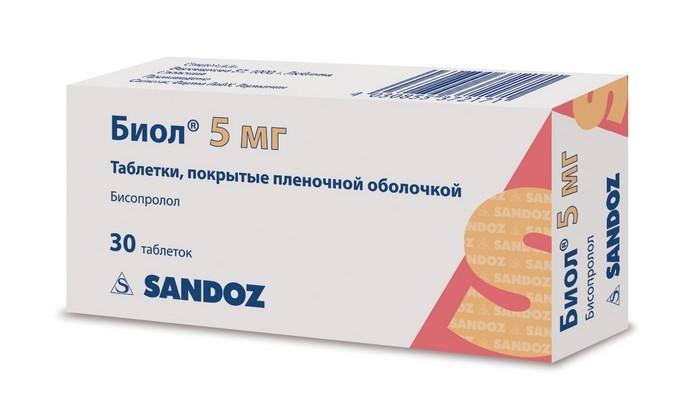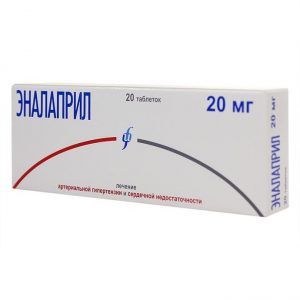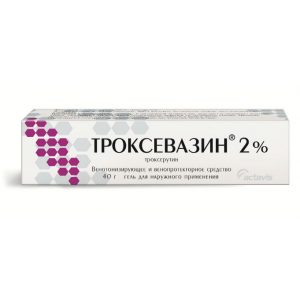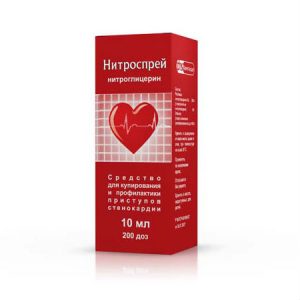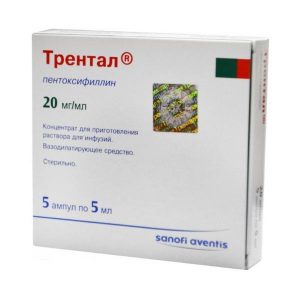Description
Release form
Film-coated tablets.
Indications
– arterial hypertension
– CHD: prevention of attacks of stable angina pectoris
– chronic heart failure (as part of combination therapy).
Contraindications
– acute heart failure and chronic heart failure in the decompensation phase requiring inotropic therapy
– cardiogenic shock
– collapse
– AV block II and III degree (without pacemaker – sardl syndrome sardlosis sardlosis sardl syndrome
– bradycardia (heart rate before treatment less than 50 beats. / min)
– severe arterial hypotension (systolic blood pressure less than 90 mm Hg)
– cardiomegaly (without signs of heart failure)
– severe forms of bronchial asthma and chronic obstructive pulmonary disease (COPD) in the history of
– severe circulatory disorders
– Raynaud’s syndrome
– metabolic acidosis
– pheochromocytoma (without the simultaneous use of alpha-blockers)
– concomitant use of flactaphenin and sultoprid
– age under 18 years (efficacy and safety s not set)
– hypersensitivity to the drug Biol to other beta-blockers.
Caution: – carrying out desensitizing therapy
– hyperthyroidism
– type 1 diabetes mellitus and diabetes mellitus with significant fluctuations in blood glucose concentration
– severe renal failure (CC less than 20 ml / min)
– severe hepatic dysfunction
– psoriasis Irdlkp – AV block degrees
– Prinzmetal angina
– restrictive cardiomyopathy
– congenital heart disease or heart valve disease with severe hemodynamic disorders
– chronic heart failure with myocardial infarction but during the last 3 months
– depression (including history)
– pheochromocytoma (required simultaneous use of alpha-blockers)
– a strict diet.
Use during pregnancy and lactation
Bisoprolol does not have direct cytotoxic, mutagenic and teratogenic effects, but has pharmacological effects that can have a harmful effect on the course of pregnancy and / or on the fetus, or on the newborn. Usually beta-blockers reduce placental perfusion, which leads to a slowdown in fetal growth, fetal death, miscarriages or premature births. The fetus and the newborn baby may experience pathological reactions, such as intrauterine growth retardation, hypoglycemia, bradycardia.
The drug Biol ® should not be used during pregnancy, use is possible if the benefit to the mother outweighs the risk of side effects in the fetus and / or baby. In the case when treatment with Biol ® is considered as necessary, blood flow in the placenta and uterus should be monitored. and also observe the growth and development of the unborn child, and in case of adverse events regarding pregnancy and / or the fetus, take alternative methods of therapy. You should carefully examine the newborn after childbirth. Symptoms of hypoglycemia and bradycardia usually occur during the first 3 days of life.
There is no data on the absorption of bisoprolol in breast milk. Therefore, the use of Biol ® is not recommended for women during lactation. If it is necessary to use the drug during lactation, breastfeeding must be stopped.
Special instructions
Do not abruptly interrupt treatment with Biol ® because of the risk of severe arrhythmias and myocardial infarction. Cancellation is carried out gradually, reducing the dose by 25% every 3-4 days.
Monitoring the condition of patients taking Biol ® should include measuring heart rate and blood pressure (at the beginning of treatment daily, then once every 3-4 months), an ECG, determining the concentration of blood glucose in patients with diabetes mellitus (1 time in 4-5 months.)
In elderly patients, it is recommended to monitor renal function (1 time in 4-5 months).
The patient should be trained in the method of calculating heart rate and instructed on the need for medical advice for heart rate less than 50 beats / min.
In the case of elderly patients with increasing bradycardia (heart rate less than 50 beats / min.), a pronounced decrease in blood pressure (systolic blood pressure less than 100 mm Hg), AV block, it is necessary to reduce the dose or stop treatment.
Before starting treatment, it is recommended to study the function of external respiration in patients with a history of bronchopulmonary burden.
Patients using contact lenses should be aware that a decrease in tear fluid production is possible during treatment with the drug.
When using Biol ® in patients with pheochromocytoma, there is a risk of developing paradoxical arterial hypertension (unless effective blocking of alpha-adrenergic receptors has been previously achieved).
With hyperthyroidism, bisoprolol may mask certain clinical signs of hyperthyroidism (eg,
tachycardia). Abrupt withdrawal of the drug in patients with hyperthyroidism is contraindicated, since it can increase symptoms.
In diabetes mellitus, bisoprolol may mask tachycardia caused by hypoglycemia. Unlike non-selective beta-blockers, it practically does not enhance insulin-induced hypoglycemia and does not delay the restoration of blood glucose concentrations to normal levels.
With the simultaneous administration of clonidine, its administration can be stopped only a few days after the withdrawal of the drug Biol ®.
It is possible to increase the severity of the hypersensitivity reaction and the lack of effect of the usual doses of epinephrine against the background of a burdened allergic history.
If surgery is necessary, drug discontinuation is carried out 48 hours before the start of general anesthesia. If the patient took the drug before surgery, he should choose a drug for general anesthesia with a minimally negative inotropic effect.
Reciprocal vagus nerve activation can be eliminated iv by administration of atropine (1-2 mg).
Medicines that reduce the reserves of catecholamines (including reserpine) can enhance the effect of beta-blockers, so patients taking such combinations of drugs should be constantly monitored by a doctor to detect a pronounced decrease in blood pressure or bradycardia.
Patients with bronchospastic diseases can be prescribed cardioselective beta-
adrenergic blockers with caution in case of intolerance and / or ineffectiveness of other antihypertensive drugs. While taking
beta-blockers in patients with concomitant bronchial asthma, airway resistance may increase. If the dose of Biol ® is exceeded, in such patients there is a risk of developing bronchospasm.
In the case of patients with increasing bradycardia (heart rate less than 50 beats / min), a pronounced decrease in blood pressure (systolic blood pressure less than 100 mm Hg), AV block, it is necessary to reduce the dose or stop treatment.
It is recommended that Biol ® therapy be discontinued if depression develops.
Do not abruptly interrupt treatment because of the danger of developing severe arrhythmias and myocardial infarction. Drug withdrawal is carried out gradually, reducing the dose for 2 weeks or more (reduce the dose by 25% in 3-4 days).
The drug should be discontinued before examining the concentration in the blood and urine of catecholamines, normetanephrine, vanillin mindic acid, and antinuclear antibody titers.
In smokers, beta-blockers are less effective.
Influence on the ability to drive vehicles and control mechanisms
During treatment with Biol ®, care must be taken when driving vehicles and engaging in other potentially dangerous activities that require increased concentration of attention and speed of psychomotor reactions.
Composition
Biol tablets, film-coated, light yellow in color, round, biconvex, with a cross-shaped notch on one side and an engraving of BIS 5 on the other on the fracture – white.
1 tab: – bisoprolol hemifumarate 5 mg
Excipients: microcrystalline cellulose, calcium hydrogen phosphate, corn starch, croscarmellose sodium, magnesium stearate, silicon dioxide colloidal anhydrous.
Composition of the film coat: lactose monohydrate, hypromellose, titanium dioxide, macrogol-4000, dye iron (III) oxide yellow.
Dosage and administration of
The drug Biol® is taken orally, in the morning on an empty stomach, 1 time / day. and with a little liquid, in the morning before breakfast, during or after it. Tablets should not be chewed or ground into powder.
In all cases, the regimen and dose are selected by the doctor individually for each patient, in particular, taking into account the heart rate and the patient’s condition.
– Arterial hypertension and ischemic heart disease
In case of arterial hypertension and ischemic heart disease, Biol® is used at 5 mg once a day. If necessary, increase the dose to 10 mg 1 time / day.
In the treatment of arterial hypertension and angina pectoris, the maximum daily dose is 20 mg 1 time / day.
– Chronic heart failure
Starting treatment for chronic heart failure with Biol® requires a special titration phase and regular medical supervision.
A prerequisite for treatment with Biol® is stable chronic heart failure with no signs of exacerbation. Treatment of chronic heart failure (CHF) with Biol® begins in accordance with the following titration scheme. In this case, individual adaptation may be required depending on how well the patient tolerates the prescribed dose, i.e. the dose can be increased only if the previous dose was well tolerated.
To ensure an appropriate titration process in the initial stages of treatment, it is recommended to use the drug in smaller doses.
The recommended starting dose is 1.25 mg (1/4 tablet of 5 mg) 1 time / day. Depending on individual tolerance, the dose should be gradually increased to 2.5 mg (1/2 tablet of 5 mg), 3.75 mg (3/4 tablet of 5 mg), 5 mg (1 tablet of Biol® 5 mg or 1/2 tablet 10 mg), 7.5 mg (3/4 tablets of 10 mg) and 10 mg 1 time / day. with an interval of at least 2 or more weeks. If an increase in the dose of the drug is poorly tolerated by the patient, a dose reduction is possible.
The maximum daily dose in the treatment of heart failure is 10 mg 1 time / day.
During titration, regular monitoring of blood pressure, heart rate and symptoms of increasing severity of heart failure is recommended. The worsening of the symptoms of heart failure is possible from the first day of the drug.
During the titration phase or after it, a temporary deterioration in the course of heart failure may occur, arterial hypotension or bradycardia. In this case, it is recommended, first of all, to pay attention to the selection of the dose of concomitant standard therapy. It may also be necessary to temporarily reduce the dose of Biol® at 5 mg or cancel the treatment.
After stabilization of the patient’s condition, a dose titration should be repeated or treatment should be continued.
Impaired renal or hepatic function
Impaired mild or moderate hepatic or renal function usually does not require dose adjustment. With severe renal impairment (CC less than 20 ml / min) and in patients with severe liver disease, the maximum daily dose is 10 mg. Increasing the dose in such patients should be carried out with extreme caution.
Elderly patients do not require dose adjustment.
To date, there is insufficient data on the use of Biol® 5 mg in patients with heart failure associated with type 1 diabetes mellitus, severe renal and / or liver dysfunction, restrictive
cardiomyopathy, congenital heart defects, or hemodynamically caused heart disease. Also, until now, sufficient data have not been obtained regarding patients with heart failure with myocardial infarction over the past 3 months.
Side effects
The frequency of adverse reactions listed below determined according to the following (WHO classification): very often (? 10%) often (? 1%, but <10%) infrequently (? 0.1%, but <1%) rarely (? 0.01%, but <0.1%) very rarely (<0.01%, including individual posts). From the cardiovascular system: very often – reduction in heart rate (bradycardia, especially in patients with heart failure), palpitations often – a marked decrease in blood pressure (especially in patients with heart failure), manifestation of angiospasm (increased peripheral circulation disorders, sensation of coldness in the limbs (paresthesia) infrequently – violation of AV conduction (up to the development of complete transverse blockade and cardiac arrest), arrhythmias, orthostatic hypotension, aggravation of chronic heart failure with the development of peripheral edema (swelling of the ankles, stop shortness of breath) chest pain. From the nervous system: often – dizziness, headache, asthenia, fatigue, sleep disturbances, depression, anxiety rarely – confusion or short-term memory loss, nightmares, hallucinations, myasthenia gravis, tremors, muscle cramps. Typically, these phenomena are mild and go away, usually within 1-2 weeks after the start of treatment. On the part of the sensory organs: rarely – visual impairment, decreased lacrimation (should be taken into account when wearing contact lenses), tinnitus, hearing loss, earache very rarely – dry and sore eyes, conjunctivitis, taste disturbances. From the respiratory system: infrequently – bronchospasm in patients with bronchial asthma or obstructive respiratory diseases rarely – allergic rhinitis nasal congestion. From the digestive system: often – nausea, vomiting, diarrhea, constipation, dry oral mucosa, abdominal pain rarely – hepatitis, increased activity of liver enzymes (ALT, AST), increased bilirubin concentration, taste change. From the musculoskeletal system: infrequently – arthralgia, back pain. From the genitourinary system: very rarely – impaired potency, weakening libido. On the part of laboratory indicators: rarely – an increase in the concentration of triglycerides in the blood in some cases – thrombocytopenia, agranulocytosis, leukopenia. Allergic reactions: rarely – skin itching, rash, urticaria. From the skin: rarely – increased sweating, skin hyperemia, exanthema, psoriasis-like skin reactions very rarely – alopecia, beta-blockers can exacerbate the course of psoriasis. Other: withdrawal syndrome (increased frequency of angina attacks, increase in blood pressure). Drug Interactions Class I antiarrhythmic drugs (e.g., quinidine, disopyramide, lidocaine, phenytoin, flecainide, propafenone), when used together with bisoprolol, can reduce AV conductivity and myocardial contractility. Class III antiarrhythmic drugs (e.g., amiodarone) may increase impairment of AV conduction. Topical beta-blockers (e.g., eye drops for glaucoma) can enhance ‘s systemic effects of bisoprolol (lowering blood pressure, heart rate reduction). Parasympathomimetics when used simultaneously with bisoprolol can increase the violation of AV conduction and increase the risk of developing bradycardia. The simultaneous use of Biol ® with beta-adrenergic agonists (for example, isoprenaline, dobutamine) can lead to a decrease in the effect of both drugs. The combination of bisoprolol with adrenergic agonists affecting beta and alpha adrenergic receptors (e.g. norepinephrine, epinephrine) can enhance the vasoconstrictor effects of these agents that occur with the participation of? -adrenoreceptors, leading to an increase in blood pressure. Such interactions are more likely when using non-selective beta-blockers. Mefloquine when used concomitantly with bisoprolol may increase the risk of developing bradycardia. Allergens used for immunotherapy, or allergen extracts for skin tests increase the risk of severe systemic allergic reactions or anaphylaxis in patients receiving bisoprolol. Iodine-containing radiopaque diagnostic agents for iv administration increase the risk of anaphylactic reactions. Phenytoin with iv administration, means for inhalation anesthesia (hydrocarbon derivatives) increase severity of cardiodepressive action and the likelihood of lowering blood pressure. The effectiveness of insulin and hypoglycemic agents for oral administration may vary during treatment with bisoprolol (masks the symptoms of developing hypoglycemia: tachycardia, increased blood pressure). The clearance of lidocaine and xanthines (except theophylline) may decrease due to a possible increase in their concentration of in blood plasma, especially in patients with initially elevated clearance of theophylline under the influence of smoking. The antihypertensive effect is weakened by NSAIDs (sodium ion retention and blockade of prostaglandin synthesis by the kidneys), corticosteroids and estrogens (sodium ion retention). Cardiac glycosides, methyldopa, reserpine and guanfacine, slow calcium channel blockers (verapamil, diltiazem), amiodarone and other antiarrhythmic drugs increase the risk of developing or worsening bradycardia, AV block, heart failure and heart failure. Nifedipine can lead to a significant decrease in blood pressure. Diuretics, clonidine, sympatholytics, hydralazine and other antihypertensive drugs can lead to an excessive decrease in blood pressure. The action of non-depolarizing muscle relaxants and the anticoagulant effect of coumarins during treatment with bisoprolol may be prolonged. Tricyclic and tetracyclic antidepressants, antipsychotics (antipsychotics), ethanol, sedatives and hypnotics increase CNS depression. Concomitant use with MAO inhibitors is not recommended due to a significant increase in hypotensive effect. The break in treatment between taking MAO inhibitors and bisoprolol should be at least 14 days. Non-hydrogenated ergot alkaloids increase the risk of peripheral circulation disorders. Ergotamine increases the risk of developing peripheral circulatory disorders. Sulfasalazine increases the concentration of bisoprolol in blood plasma. Rifampicin shortens T1 / 2 of bisoprolol. Overdose Symptoms: arrhythmia, ventricular extrasystole, severe bradycardia, AV block, marked decrease in blood pressure, acute heart failure, hypoglycemia, acrocyanosis, difficulty breathing, bronchospasm, dizziness, fainting, court. Treatment: First of all, stop taking the drug, wash the stomach, take absorbent drugs, and take symptomatic therapy. In severe bradycardia, iv administration of atropine. If the effect is insufficient, with caution you can enter a tool that has a positive chronotropic effect. Sometimes a temporary setting of an artificial pacemaker may be required. With a marked decrease in blood pressure – the on / in the introduction of plasma-substituting solutions and vasopressors. With hypoglycemia, iv administration of glucagon or iv administration of dextrose (glucose) may be indicated. For AV blockade: Patients should be monitored continuously, , and be treated with beta-adrenergic agonists such as epinephrine. If necessary, staging an artificial pacemaker. With an exacerbation of the course of CHF, iv administration of diuretics, drugs with a positive inotropic effect, as well as vasodilators. In case of bronchospasm – the appointment of bronchodilators, incl. beta2-adrenergic agonists and / or aminophylline. Deystvuyuschee substances bisoprolol dosage form tablets Appointment Dlya vzrosl h in naznacheniyu Vracha Indications Serdechnaya failure, arrhythmia, Hypertonyya
